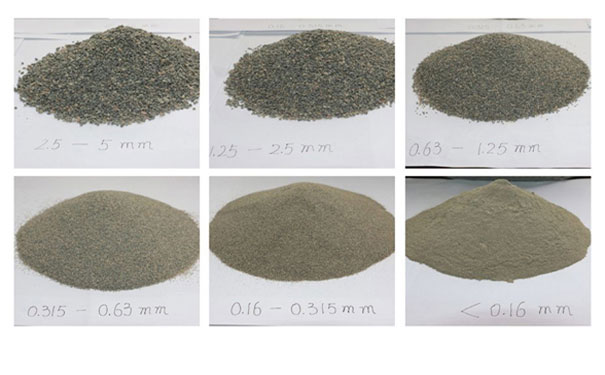Machine-made sand and machine-made sand concrete gradually replace natural sand and become an important raw material for current engineering construction operations. While ensuring the overall construction quality and benefits of the project, it has laid a good foundation for achieving the expected construction operation goals. Sand for concrete is generally required to have a fineness modulus of 3.7-1.6, which generally means that medium sand is the main component and a small amount of coarse sand and fine sand can be added, but the ratio should be controlled at 4:1. In addition to the fineness of the concrete sand, attention should be paid to the grading problem. Gradation is to better fill the gaps. If we use sand of the same fineness, the gaps will be larger, but if we use two or three particle sizes to match the gaps, the gaps will be smaller, so that when producing concrete, Not only can save cement, but also improve the compactness and strength of concrete and mortar.
Here is the specific particle size of coarse, medium and fine sand for everyone:
Coarse sand: The fineness modulus is 3.7-3.1, and the average particle size is above 0.5mm.
Medium sand: The fineness modulus is 3.0-2.3, and the average particle size is 0.5-0.35mm.
Fine sand: The fineness modulus is 2.2-1.6, and the average particle size is 0.35-0.25mm.
The production process of concrete sand is the same as the general machine-made sand production process, which requires processes such as crushing, screening, sand making and sand washing. In terms of the final product, we can control the particle size of the finished product by adjusting the particle size of the sand making machine, so as to meet the requirements of concrete materials.
Which type of sand making machine's discharge particle size meets the requirements? The PLS series vertical impact crusher (sand making machine) of Luoyang Dahua Heavy Industry is recommended here, which can adopt a high-speed mode of 80 m/s or more for the fine crushing and shaping of coarse sand in the aggregate processing industry to optimize. The effect of adjusting the particle size gradation of the finished sand can make the fineness modulus of the sand smaller. It is used for fine crushing and shaping of a variety of stone materials, especially for medium-hard, extra-hard or abrasive materials, such as sandstone, granite, basalt, silicon carbide, emery, alumina, magnesia, etc., which are more superior than other equipment.
1. Deep cavity rotor design, the crushing cavity is deeper, the material throughput is larger, and the sand making efficiency is improved. At the same time, the stones can fully collide with the crushing wall in the crushing cavity, and the stones collide with each other. Sand formation rate, reduced powder content, better sand making effect.
2. Hydraulic lid opening device. The thin oil lubrication scheme adopts hydraulic lid opening device. During Nissan work, users can directly open the lid for maintenance, which is easy to maintain. The thin oil lubrication scheme is used to effectively protect the sand making machine from overflow in normal operation. Green production is realized in the whole process, and the noise is relatively low, and it does not interfere with the surrounding environment.
3. The air flow in the vortex cavity is self-circulating, and there is less dust leakage. There is no air flow in the vortex cavity. Generally, all kinds of dust will not overflow. Green production is realized throughout the process, and the noise is relatively low and does not interfere with the surrounding environment.
4. The wearing parts have good wear resistance and long service life. The wearing parts of the whole machine are on the throwing head, and the throwing head is also designed with high-quality steel. The overall design is combined, with better wear resistance and relatively long service life long.



